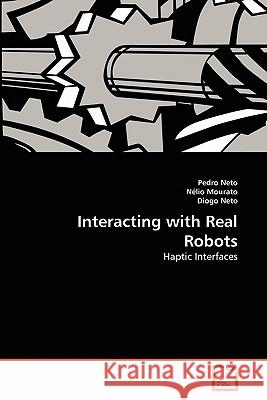Interacting with Real Robots » książka
Interacting with Real Robots
ISBN-13: 9783639354638 / Angielski / Miękka / 2011 / 80 str.
The process of programming and interacting with an industrial robot is not only restricted to the definition of an abstract program that defines the robot modus operandi. So increasingly, there is a demand for "different" ways to interact with robots, but with a well defined goal: to make the interface human-machine more intuitively. An area of knowledge that has been widely studied over the last years is related to the ability of a user to receive force feedback from a virtual or real robot whereas it performs a certain task. Commonly, this human-machine interaction process is made through a special type of devices called haptic devices. This book explores how a real robotic platform can be managed by haptic technology. Thus, robot users should be able to control a robot while receiving feedback of the forces that are being exerted on the robot end- effector.
The process of programming and interacting with an industrial robot is not only restricted to the definition of an abstract program that defines the robot modus operandi. So increasingly, there is a demand for "different" ways to interact with robots, but with a well defined goal: to make the interface human-machine more intuitively. An area of knowledge that has been widely studied over the last years is related to the ability of a user to receive force feedback from a virtual or real robot whereas it performs a certain task. Commonly, this human-machine interaction process is made through a special type of devices called haptic devices. This book explores how a real robotic platform can be managed by haptic technology. Thus, robot users should be able to control a robot while receiving feedback of the forces that are being exerted on the robot end- effector.











